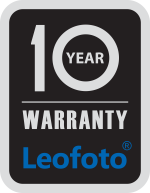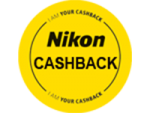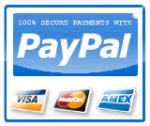|
PHOTOCHEM Potassium Dichromate 250gm
|
|||||||

|
$22.00(AUD inc. Tax)
Qty
BULK

|
|
|
||
Potassium dichromate is usually prepared by the reaction of potassium chloride on sodium dichromate. Alternatively, it can be obtained from potassium chromate by roasting chrome ore with potassium hydroxide.
MANDATORY EDU FORM REQUIRED
Please downlolad this form , complete and email to
orders @ vanbar.com.au
Potassium dichromate is an oxidant (oxidising agent). The reduction half-equation can be seen:
- Cr2O72−(aq) + 14H+ + 6e− → 2Cr3+(aq) + 7H2O (E = +1.23 V)
In organic chemistry, potassium dichromate is a mild oxidizer compared with potassium permanganate. It is used to oxidize alcohols. It converts primary alcohols into aldehydes, or into carboxylic acids if heated under reflux. In contrast, with permanganate, carboxylic acids are the sole products. Secondary alcohols are converted into ketones — no further oxidation is possible. For example, menthone may be prepared by oxidation of menthol with acidified dichromate.[2] Tertiary alcohols are not oxidized by potassium dichromate.
In an aqueous solution the color change exhibited can be used to test whether an aldehyde or ketone is present. When an aldehyde is present the chromium ions will be reduced from the +6 to the +3 oxidation state, changing color from orange to green. This is because the aldehyde can be further oxidized to the corresponding carboxylic acid. A ketone will show no such change because it cannot be oxidized further, and so the solution will remain orange.
Potassium dichromate has important uses in photography and in photographic screen printing, where it is used as an oxidising agent together with a strong mineral acid.
Gum bichromate printing was one of the very first stable photographic printing processes, dating back to about 1850. A solution of gum arabic and potassium dichromate, once applied to paper and dried, will harden when exposed to ultraviolet light.
Chromium intensification or Photochromos uses potassium dichromate together with equal parts of concentrated hydrochloric acid diluted down to approximately 10% v/v to treat weak and thin negatives of black and white photograph roll. This solution reconverts the elemental silver particles in the film to silver chloride. After thorough washing and exposure to actinic light, the film can be redeveloped to its end-point yielding a stronger negative which is able to produce a more satisfactory print.
A potassium dichromate solution in sulfuric acid can be used to produce a reversal negative (i.e., a positive transparency from a negative film). This is effected by developing a black and white film but allowing the development to proceed more or less to the end point. The development is then stopped by copious washing and the film then treated in the acid dichromate solution. This converts the silver metal to silver sulfate, a compound that is insensitive to light. After thorough washing and exposure to actinic light, the film is developed again allowing the previously unexposed silver halide to be reduced to silver metal.
The results obtained can be unpredictable, but sometimes excellent results are obtained producing images that would otherwise be unobtainable. This process can be coupled with solarisation so that the end product resembles a negative and is suitable for printing in the normal way.
CrVI compounds have the property of tanning animal proteins when exposed to strong light. This quality is used in photographic screen-printing.
In screen-printing a fine screen of bolting silk or similar material is stretched taut onto a frame similar to the way canvas is prepared before painting. A colloid sensitized with a dichromate is applied evenly to the taut screen. Once the dichromate mixture is dry, a full-size photographic negative is attached securely onto the surface of the screen, and the whole assembly exposed to strong light - typically about half an hour in bright sunlight - hardening the exposed colloid. When the negative is removed, the unexposed mixture on the screen can be washed off with warm water, leaving the hardened mixture intact, acting as a precise mask of the desired pattern, which can then be printed with the usual screen-printing process.
No specifications for this product.
No accessories for this product.


ECommerce Integration by Yart
(Packing, handeling and shipping charges have been incorporated in the cost of these goods)
Today we are offering free freight in Australia on this product.Small items will ship via Australia post. All other products will ship via road freight or local couriers.This is a limited offer and subject to change at any time.
For Lab service products the return post or freight has been incorporated in the price and for Drop box only services there is NO freight applicable.
Close

















